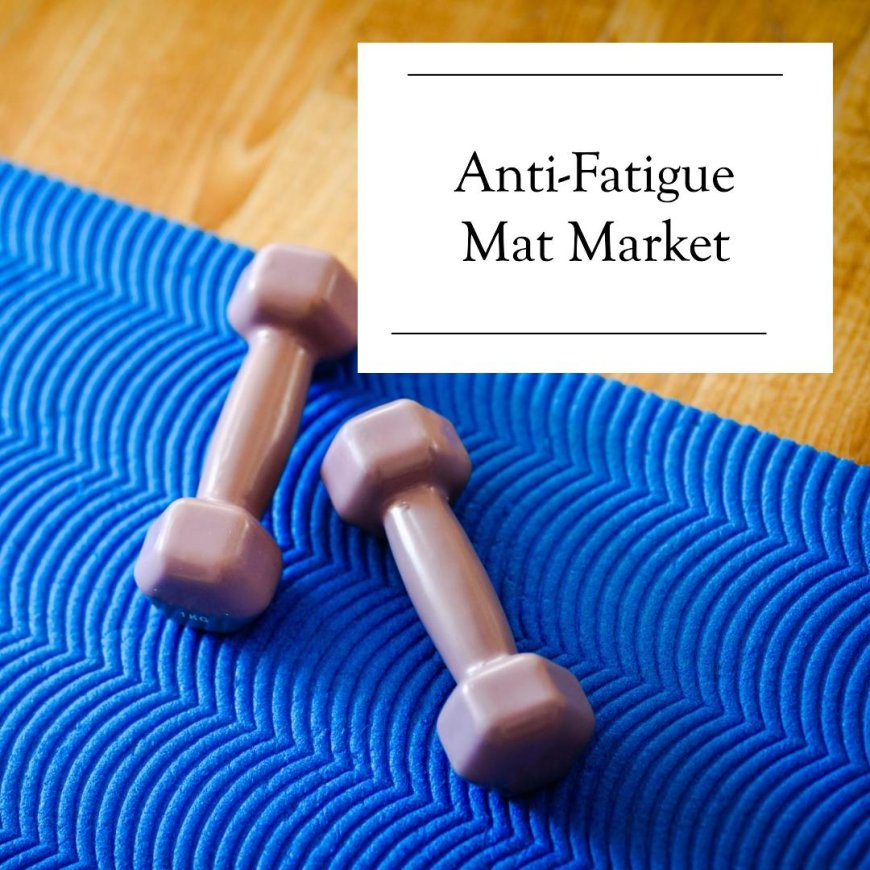Anti-Fatigue Mat Market Demand to Increase at a CAGR of 5.2% from 2024 to 2034

Global sales of anti-fatigue mats are projected to reach US$ 19.4 billion in 2024. The market is expected to grow at a CAGR of 5.2%, reaching US$ 32.1 billion by the end of 2034.
Anti-fatigue mats are specially designed floor coverings aimed at reducing pain or discomfort from prolonged standing. These mats are widely used in environments where individuals need to stand for long periods.
The trend towards flexible work arrangements, including remote work and shared workspaces, is driving a growing emphasis on creating comfortable and ergonomic home offices. This has led to an increased demand for anti-fatigue mats for home office setups. Additionally, the rising popularity of standing desks in offices is boosting the demand for these mats, as more people seek supportive solutions to alleviate the discomfort associated with extended periods of standing.
For More Insights into the Market, Request a Sample of this Report:
https://www.factmr.com/connectus/sample?flag=S&rep_id=3487
Key Companies Profiled: Crown Mats and Matting, Smart Step, New Pig Corporation, NoTrax, American Floor Mats, Imprint Comfort Mats, WellnessMats, 3M, Cintas Corporation, AIRE Industrial, COBA Europe Ltd, The Andersen Company, Apache Mills, Superior Manufacturing Group, Ergomat, Eagle Mat and Floor Products
Market Segmentations
By Material : Foam, Rubber, Gel
By Surface Compatibility : Wet, Dry, Oily
By Length : Less than 5 Feet, 5 Feet to 12 Feet, 13 Feet to 60 Feet, > 60 Feet
By Design : Standard, Drainage, Interlocking, Others
By End User : Industrial, Commercial, Residential
By Sales Channel : Direct Sales, Indirect Sales
Key Takeaways from Anti-Fatigue Mats Market Study
- East Asia dominated the global anti-fatigue mats market covering a market share of over 35 percent in 2019.
- Anti-fatigue mats for commercial and residential settings are gaining traction, due to which, demand for dry surface compatible anti-fatigue mats is likely to create a value pool of over US$ 73 thousand.
- Anti-fatigue mats of length more than 60 feet are estimated to account for a majority of the market share by the end of 2020, and over 36 percent by 2030.
- Anti-fatigue mats with standard designs currently hold a dominant share in the global anti-fatigue mats market, but these are likely to lose some share to drainage designed anti-fatigue mats.
“Demand for anti-fatigue mats is expected to rise dramatically over the next couple of years due to increased spending by consumers in developing countries. Leading manufacturers of anti-fatigue mats in the U.S. and Europe plan to increase their brand presence across developing markets,” opines a senior analyst.
Get Customization on this Report for Specific Research Solutions:
https://www.factmr.com/connectus/sample?flag=RC&rep_id=3487
Country-wise Analysis
The growth of the e-commerce sector and the expansion of warehousing facilities are driving the increasing demand for anti-fatigue mats in the United States. Additionally, strict adherence to occupational health and safety regulations is promoting the adoption of anti-fatigue mats across various industries. Employers are required to provide ergonomic solutions, such as anti-fatigue mats, to mitigate the risk of musculoskeletal issues among workers.
Competitive Landscape
Key players in the anti-fatigue mat industry are leveraging innovation, market expansion, customer-centric approaches, and strategic alliances to maintain their competitive edge. These leading companies are adapting to evolving industry trends, prioritizing customer satisfaction, and investing in continuous improvement to sustain their leadership positions and drive ongoing growth.
In 2022, First Mats introduced a new line of hygienic anti-fatigue mats designed specifically for sterile environments, such as food production facilities and hospitals.

 swatichaudhari
swatichaudhari 










